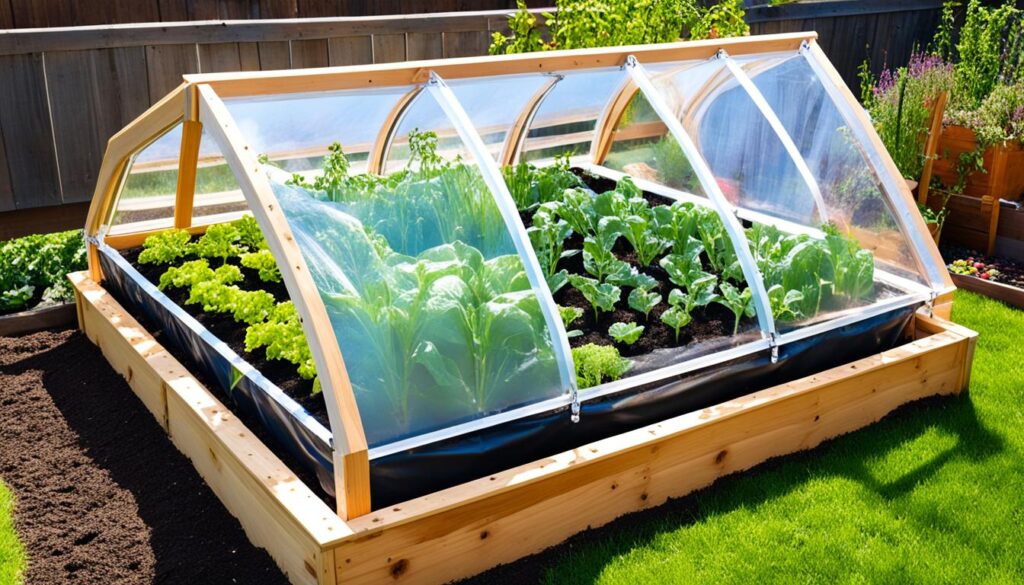When it comes to creating a beautiful garden, finding the right plants for each area is crucial. But what if you have a shaded spot that you want to fill with vibrant blooms? Can iris plants thrive in shade? In this article, we’ll explore the shade tolerance of iris plants and provide insights into finding the best iris varieties for shady conditions. So, if you’re wondering about growing iris in shade, keep reading to discover how you can bring color and elegance to even the darkest corners of your garden.
Key Takeaways
- While iris plants prefer full sun, some varieties are more shade tolerant and can thrive in shady areas.
- Understanding the ideal conditions for iris growth and how shade can affect their development is essential for planting iris in shade.
- There are specific iris varieties that are well-suited for shady areas, allowing you to add beauty and color to your landscape.
- Planting iris in shade requires proper techniques and care, including soil preparation, watering, and maintenance.
- Creating the right environment for shade-loving iris varieties is important, considering soil requirements, watering needs, and supplemental lighting options.
Understanding Iris Shade Tolerance
Before planting iris in shade, it is important to understand their shade tolerance. While iris plants generally prefer full sun, some varieties are more adaptable to shade. So let me dive deeper into the ideal conditions for iris growth and how shade can affect their development.
When it comes to iris plants, they thrive best in full sun, which means at least six hours of direct sunlight per day. However, certain iris varieties have developed tolerance to shade and can still flourish in partially shaded areas.
The ideal conditions for iris growth in shaded areas include a balance of light and darkness. While some iris plants can tolerate a bit of shade, it’s important to note that too much shade can prevent them from blooming to their fullest potential.
Shade can affect the development of iris plants in several ways. It can impact the overall growth and vigor of the plant, leading to fewer and smaller blooms. Additionally, prolonged exposure to shade can make the plants more susceptible to diseases and pests.
However, with the right understanding and care, you can still enjoy the beauty of iris plants in shaded areas. By selecting the right shade-tolerant iris varieties and creating an environment that meets their needs, you can encourage healthy growth and vibrant blooms.
Remember, when choosing iris plants for shaded areas, look for varieties specifically labeled as shade-tolerant or shade-loving. These varieties have adapted to thrive in lower light conditions and will be more successful in your shaded garden.
Components of Ideal Conditions for Iris Growth
For iris plants to thrive in shade, it’s important to provide them with optimal conditions. Here are some key factors to consider:
- Light: While iris plants can tolerate shade, they still require some direct sunlight. Aim to provide them with at least 3-4 hours of direct sunlight each day, filtered through the shade.
- Soil: Well-drained soil is crucial for iris plants. Ensure the soil is rich in organic matter and has good drainage to prevent waterlogging, as excess moisture can lead to root rot.
- Water: Adequate watering is essential for iris plants, regardless of the shade. Monitor the soil moisture level and water when the top inch of soil feels dry. Avoid overwatering, as iris plants are susceptible to crown rot.
- Fertilizer: Regular fertilization can promote healthy growth and blooming in iris plants. Use a balanced fertilizer specifically formulated for flowering plants, following the recommended application rates.
- Space: Provide enough spacing between iris plants to ensure good air circulation, which can help prevent diseases. Avoid overcrowding, as it can create a damp environment that is more prone to fungal infections.
By understanding the shade tolerance of iris plants and creating the ideal conditions for their growth, you can successfully cultivate these beautiful flowers in shaded areas. With a little care and attention, your shaded garden can still showcase the elegance and vibrance of iris plants.
Best Iris Varieties for Shady Areas
When it comes to adding beauty and vibrant colors to shaded areas, selecting the right iris varieties is key. Whether you have a lightly shaded garden or a densely shaded spot, there are iris varieties that can thrive in these conditions and enhance the aesthetics of your landscape.
Here are some of the best iris varieties for shady areas:
- Pallida ‘Variegata’: This stunning iris variety features long, sword-shaped leaves with white and green stripes. Its purple blooms add a pop of colour to shaded corners, making it a visual delight.
- Siberian Iris ‘Caesar’s Brother’: With its rich, deep blue flowers, this Siberian iris variety thrives in part shade and adds elegance to any garden. Its graceful arching foliage creates a lovely contrast against other plants.
- Japanese Iris ‘Crimson Prince’: This iris variety boasts large, ruffled blooms in shades of deep crimson. It performs exceptionally well in shady areas, providing a striking focal point with its vibrant flowers.
- Spuria Iris ‘Black Gamecock’: Known for its intense, velvety purple blooms, this spuria iris variety can tolerate partial shade. Its tall flower stalks bring height and drama to any shady garden.
Planting Iris in Shade
When planting iris in shade, it’s important to choose varieties that are specifically suited for these conditions. These shade-tolerant iris varieties have adapted to thrive in lower light levels and can still produce stunning flowers.
To begin planting iris in shade, select a suitable location with dappled or filtered sunlight. Prepare the soil by incorporating organic matter and ensuring good drainage. Dig a hole and place the rhizome horizontally, just beneath the soil surface. Water thoroughly after planting and maintain regular watering throughout the growing season.
Consider adding a layer of organic mulch around your iris plants to help retain moisture and suppress weeds. This will provide additional protection and support healthy growth in shady areas.
Remember to periodically divide your iris plants to maintain their vigor and ensure optimum blooming. Division should be done when the plant is dormant, typically in late summer or early autumn.
With these best iris varieties and proper planting techniques, you can create a stunning garden even in shaded areas. Their beauty and resilience will transform those forgotten corners into vibrant spaces that delight the senses.

Planting Iris in Shade: Tips and Techniques
Planting iris in shade requires careful consideration and proper techniques. To successfully cultivate iris in shaded areas, follow these useful tips and step-by-step instructions:
1. Choose Shade-Tolerant Iris Varieties
Select iris varieties that are known to tolerate shade well. Some recommended varieties include ‘Caesar’s Brother’, ‘Siberian Butterfly’, and ‘Silverado’. These varieties have proven to thrive in shady conditions, showcasing their vibrant blooms even with limited sunlight.
2. Find the Ideal Location
Identify the best spot in your garden that receives partial shade or dappled sunlight. Avoid areas with dense shade as it may hinder the growth of iris plants. Aim for an area that receives at least 4 to 6 hours of indirect sunlight per day.
3. Prepare the Soil
Prior to planting iris, ensure the soil is well-draining to prevent waterlogging. Incorporate organic matter such as compost or well-rotted manure to improve the soil’s fertility and drainage. Avoid heavy clay soils that tend to retain moisture.
4. Planting Depth and Spacing
When planting iris rhizomes, place them horizontally with the top facing the soil surface. The ideal planting depth is typically around 3 to 4 inches (7 to 10 cm) deep. Space the rhizomes approximately 12 to 18 inches (30 to 45 cm) apart to allow for proper airflow and growth.
5. Watering and Maintenance
Water newly planted iris thoroughly after planting to settle the soil. Afterwards, water deeply once a week, providing about 1 inch (2.5 cm) of water. However, be cautious not to overwater as iris plants prefer slightly drier conditions. Regularly remove weeds and monitor for pests or diseases.
With these tips and techniques, you can ensure successful planting of iris in shaded areas. Embrace the beauty of iris blooms even in the comfort of partial shade.
Creating the Right Environment for Shade-Loving Irises
Shade-loving iris varieties can bring a touch of elegance and color to shady areas of your garden. However, providing the right environment for these irises is essential to ensure their growth and vibrancy. In this section, I will guide you through the important factors to consider when creating the optimal conditions for shade-loving irises to thrive.
Soil Requirements
The first step in creating the ideal environment for shade-loving irises is to ensure they have the right soil conditions. These irises prefer well-draining soil that retains moisture without becoming waterlogged. A loamy soil rich in organic matter is ideal. Before planting, amend the soil with compost or well-rotted manure to improve its texture and fertility.
Watering Needs
Proper watering is crucial for the success of shade-loving irises. While they prefer moist soil, it is important to avoid overwatering, as it can lead to root rot. To maintain the right moisture level, water deeply and thoroughly when the top inch of soil feels dry. Applying a layer of mulch around the plants will help retain moisture and prevent weed growth.
Supplemental Lighting Options
In low light conditions, shade-loving irises may benefit from supplemental lighting. If the shaded area receives minimal sunlight, you can consider using artificial lighting to provide the necessary light intensity for their growth. LED grow lights are a popular choice, as they emit the right spectrum of light for plant growth while being energy-efficient.
To maximize the benefit of supplemental lighting, position the grow lights at an appropriate distance from the irises, following the manufacturer’s recommendations. Regularly monitor the light intensity and adjust as needed depending on the needs of your shade-loving irises.

Creating the right environment for shade-loving iris varieties requires attention to detail. By providing well-draining soil, proper watering, and potentially supplementing with additional lighting, you can ensure that these irises thrive even in low light conditions. In the next section, we will explore essential care tips for maintaining shade-loving irises in a shaded garden.
Maintaining Iris in a Shaded Garden
Now that your iris plants are established in a shaded garden, it is time to provide them with the necessary care for their ongoing health and vitality. Below, I will share some essential iris care tips to ensure your shaded garden continues to thrive with beautiful irises.
Fertilization
Fertilizing your iris plants is crucial for their growth and blooming, especially in shady conditions. Apply a slow-release balanced fertilizer in early spring to supply the necessary nutrients throughout the growing season. Make sure to follow the manufacturer’s instructions for application rates, as over-fertilization can result in leaf burn or reduced flowering.
If you prefer an organic approach, consider using compost or well-rotted manure as a natural fertilizer. Apply a thin layer around the base of your iris plants in spring, taking care not to cover the rhizomes.
Pest Control
While iris plants are generally resilient, it’s important to stay vigilant against common garden pests that can affect their health. Regularly inspect your iris leaves for signs of chewing insects, such as slugs or snails. If you notice any damage, try removing these pests by hand or consider using organic pest control methods, such as diatomaceous earth or beer traps.
Additionally, be on the lookout for iris borers, which can burrow into the rhizomes and cause significant damage. To prevent infestations, maintain proper garden hygiene by removing debris and old iris foliage, as this can attract the pests. If you suspect iris borers are present, it may be necessary to dig up and inspect the rhizomes, removing any infested ones to protect the health of your plants.
Division Techniques
Dividing iris plants is an essential maintenance task, and it becomes even more crucial in shaded gardens. Over time, iris clumps can become overcrowded, leading to reduced blooming and increased susceptibility to diseases. Regular division allows you to rejuvenate the plants and promote healthier growth.
The best time to divide iris plants is typically in late summer or early autumn, after flowering has finished. Carefully dig up the clumps, separating the rhizomes into individual sections. Trim away any damaged or dead sections before replanting them in well-prepared soil. Water the newly divided iris plants thoroughly and continue to monitor their progress for optimal growth.
By following these iris care tips in shady conditions, you can ensure that your iris plants thrive and continue to beautify your shaded garden. Remember to provide the right amount of fertilization, stay vigilant against pests, and regularly divide your irises for long-lasting health and vibrancy.
Overcoming Challenges of Growing Iris in Shade
Growing irises in low light conditions can pose certain challenges. However, with the right knowledge and techniques, it is possible to overcome these obstacles and achieve successful iris growth in shaded areas. In this section, I will address some common challenges that you may encounter when growing irises in shade and provide practical solutions to help you overcome them.
1. Reduced Blooming
One of the challenges of growing irises in low light is the potential for reduced blooming. Irises thrive in full sun, and lack of sunlight can inhibit their ability to produce vibrant and abundant blooms. To address this issue, consider planting shade-tolerant iris varieties that are known to perform well in low light conditions.
Additionally, make sure to place your iris plants in the brightest areas of the shade where they can still receive some direct sunlight. This will help promote blooming and enhance the overall health of the plants.
2. Leaf Discoloration
Inadequate sunlight can also result in leaf discoloration in irises. Without sufficient light, the leaves may turn yellow or appear stunted. To prevent leaf discoloration, choose iris varieties that are specifically adapted to shade and have a higher tolerance for low light conditions.
Furthermore, supplementing with appropriate fertilizers and maintaining optimal soil moisture levels can help minimize leaf discoloration and promote healthy foliage growth in shaded areas.
3. Potential Diseases
Shaded areas can sometimes create conditions that are more conducive to the development of certain diseases in irises. Fungal diseases, such as leaf spot and crown rot, may be more prevalent in low light environments.
To minimize the risk of disease, ensure that your iris plants are properly spaced to allow for good air circulation. This will help prevent moisture build-up and reduce the likelihood of fungal infections. Regularly inspect your plants for any signs of disease or pest infestations, and promptly take appropriate measures to manage and control the issues.

By being aware of these challenges and implementing the suggested solutions, you can overcome the difficulties of growing irises in shade. With the right selection of shade-tolerant iris varieties, strategic placement of plants, and proper care and maintenance, you can enjoy the beauty of irises even in areas with limited sunlight.
Maximizing Iris Beauty in Shady Spots
Even in shaded spots, iris plants can offer stunning beauty and vibrant colors. With a little creativity and strategic planning, you can maximize the visual impact of iris plants in shady areas. Here are some tips to help you make the most of your shade-tolerant iris varieties:
- 1. Creative planting combinations: Pair your shade-tolerant iris plants with other shade-loving flowers and plants to create captivating and harmonious displays. Consider combining them with ferns, hostas, and astilbes for a lush and textured garden.
- 2. Companion plants: Choose companion plants that not only complement the beauty of iris plants but also create a visually appealing contrast. For example, planting iris plants alongside delicate bleeding hearts or vibrant impatiens can create an eye-catching focal point in a shaded garden.
- 3. Effective design techniques: Use design techniques such as color repetition and contrast to enhance the visual impact of iris plants in shady spots. Repeat the colors of your iris blooms in other elements of your garden, like decorative accents or plant containers, to create a cohesive and harmonious look.
By implementing these strategies, you can create captivating gardens that showcase the beauty of iris plants, even in shady areas. Remember to choose shade-tolerant iris varieties and experiment with different planting combinations to find the perfect arrangement for your garden.
Unleash the Beauty of Shade-Tolerant Iris Plants
If you’re looking to add elegance and pops of color to your shady spots, shade-tolerant iris plants are an excellent choice. These versatile and hardy plants can thrive in areas with limited sunlight, bringing beauty and vibrancy to your garden. With their unique blooms and lush foliage, iris plants offer a touch of sophistication and charm that can transform any shaded area into a stunning retreat.
Conclusion
In conclusion, growing iris in shade is indeed possible when choosing shade-tolerant iris varieties. Although iris plants generally prefer full sun, there are certain varieties that can thrive in areas with limited sunlight. By carefully selecting the right iris plants and providing them with the optimal environment and care, you can enjoy the elegance of irises even in shaded spots.
When considering iris plants for shady areas, it is essential to choose varieties that are known for their shade tolerance. These varieties have been specially bred to adapt to lower light conditions and are more likely to thrive in shaded gardens. By selecting shade-tolerant iris plants, you can ensure that your garden remains vibrant and colorful, even in areas with limited sunshine.
Creating the right environment for shade-loving iris varieties is crucial for their overall growth and development. Adequate soil preparation, proper watering, and the use of supplemental lighting can help compensate for the lack of sunlight. Additionally, it is important to provide ongoing maintenance and care, including fertilization and pest control, to keep your iris plants healthy and thriving.
So, if you’re wondering, “Will iris grow in shade?” the answer is a resounding yes. With the right knowledge and techniques, you can successfully cultivate and enjoy the beauty of iris plants, even in shady areas. Don’t let limited sunlight deter you—choose the right shade-tolerant iris varieties and create a stunning garden that flourishes in the beauty of irises.








